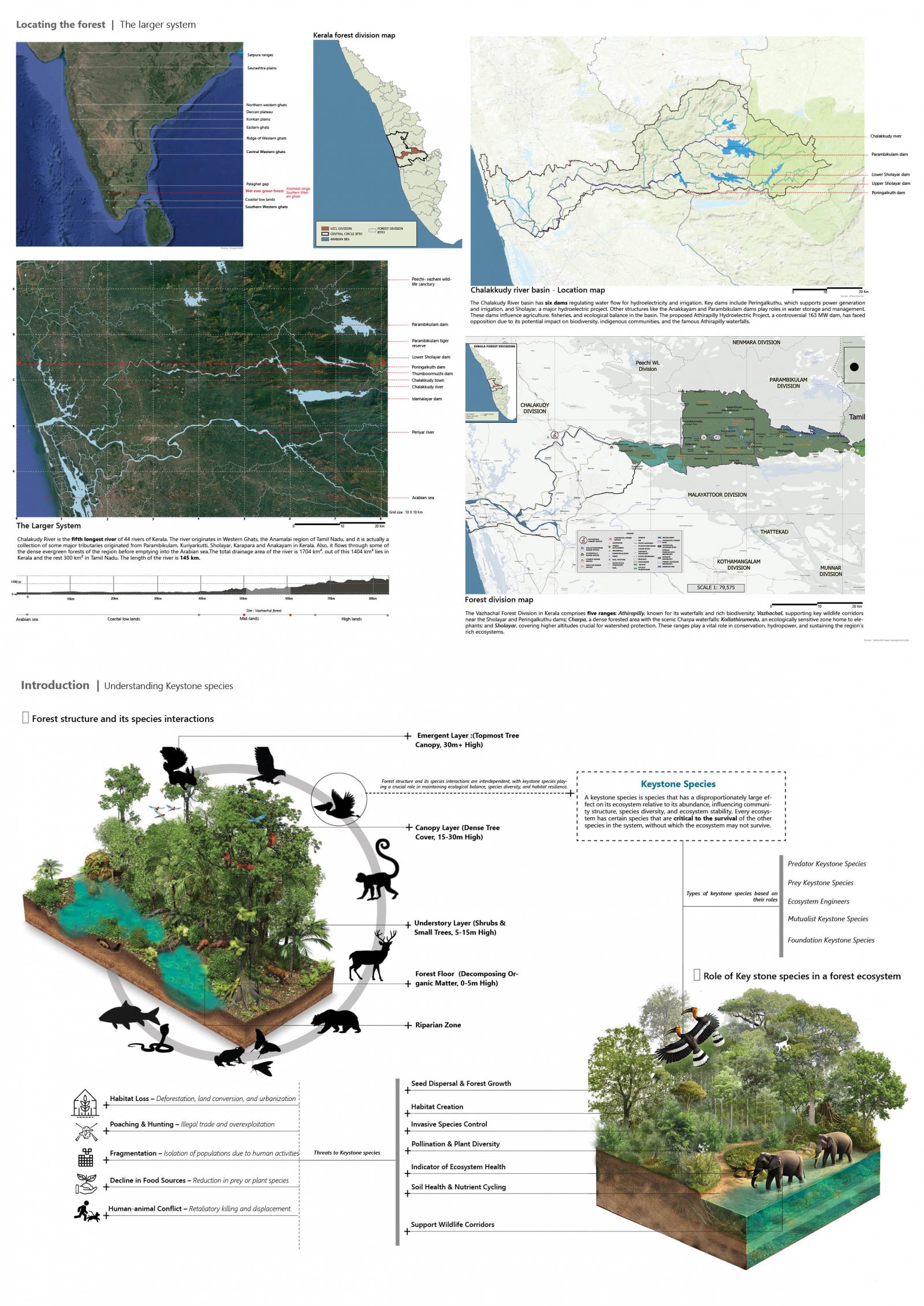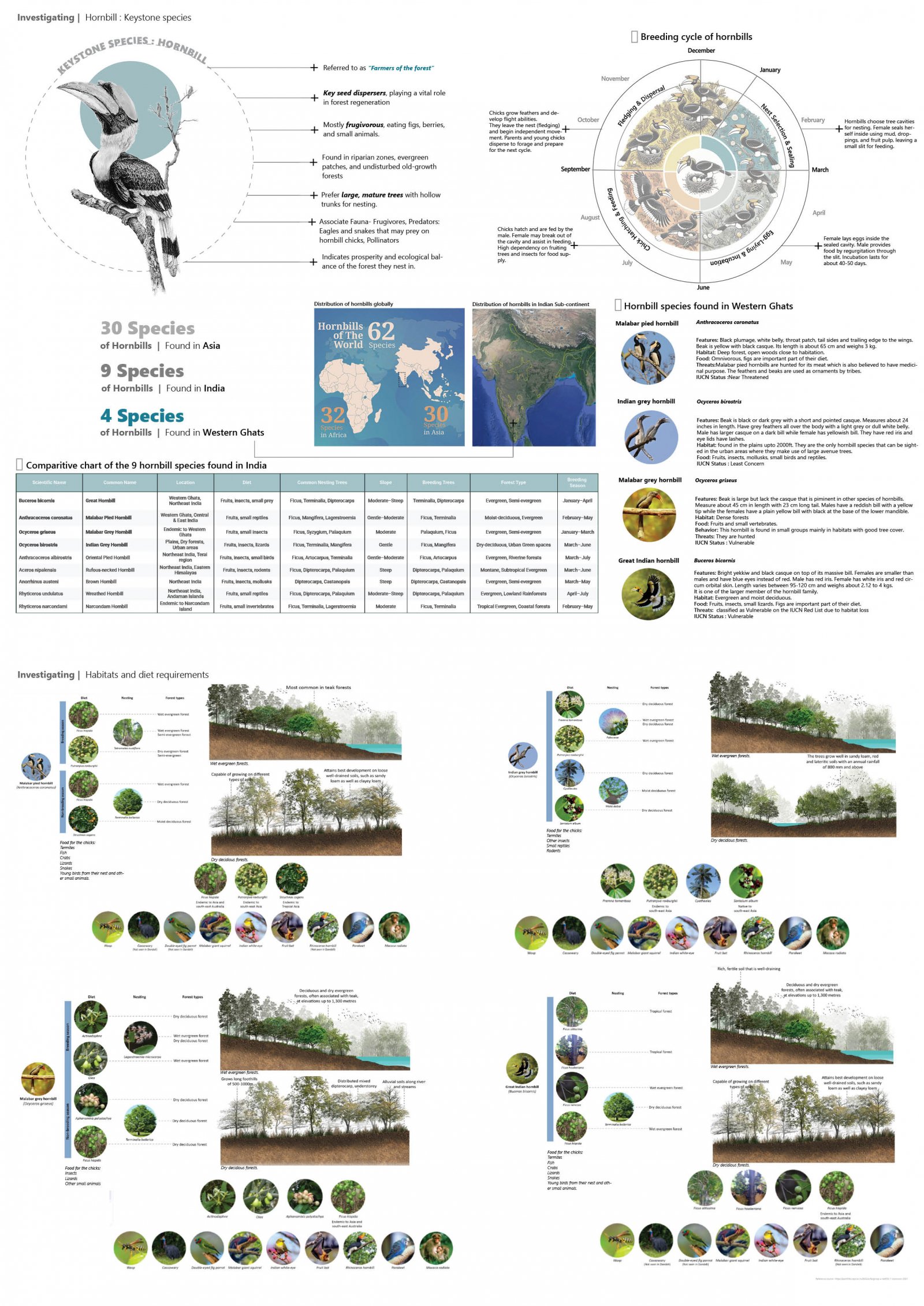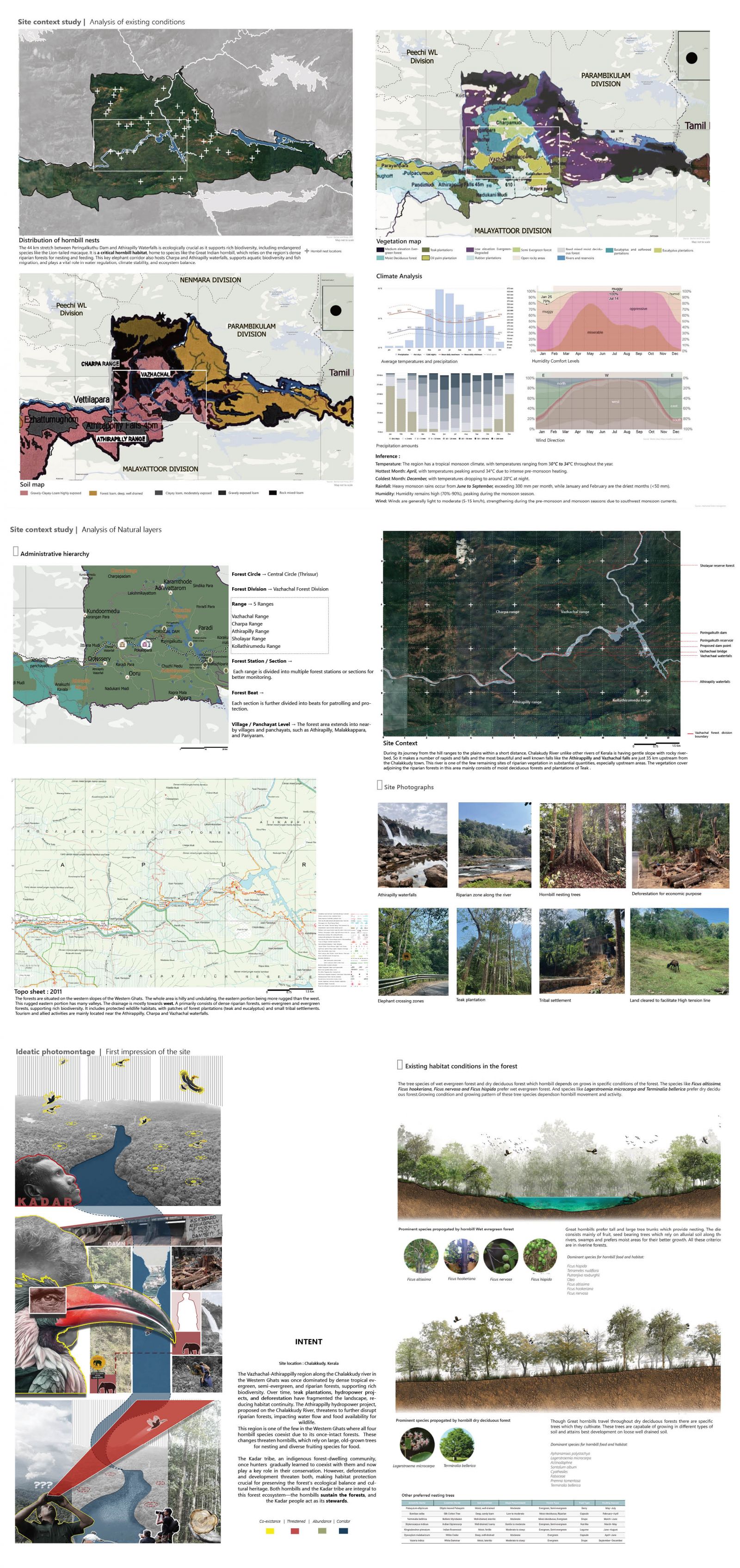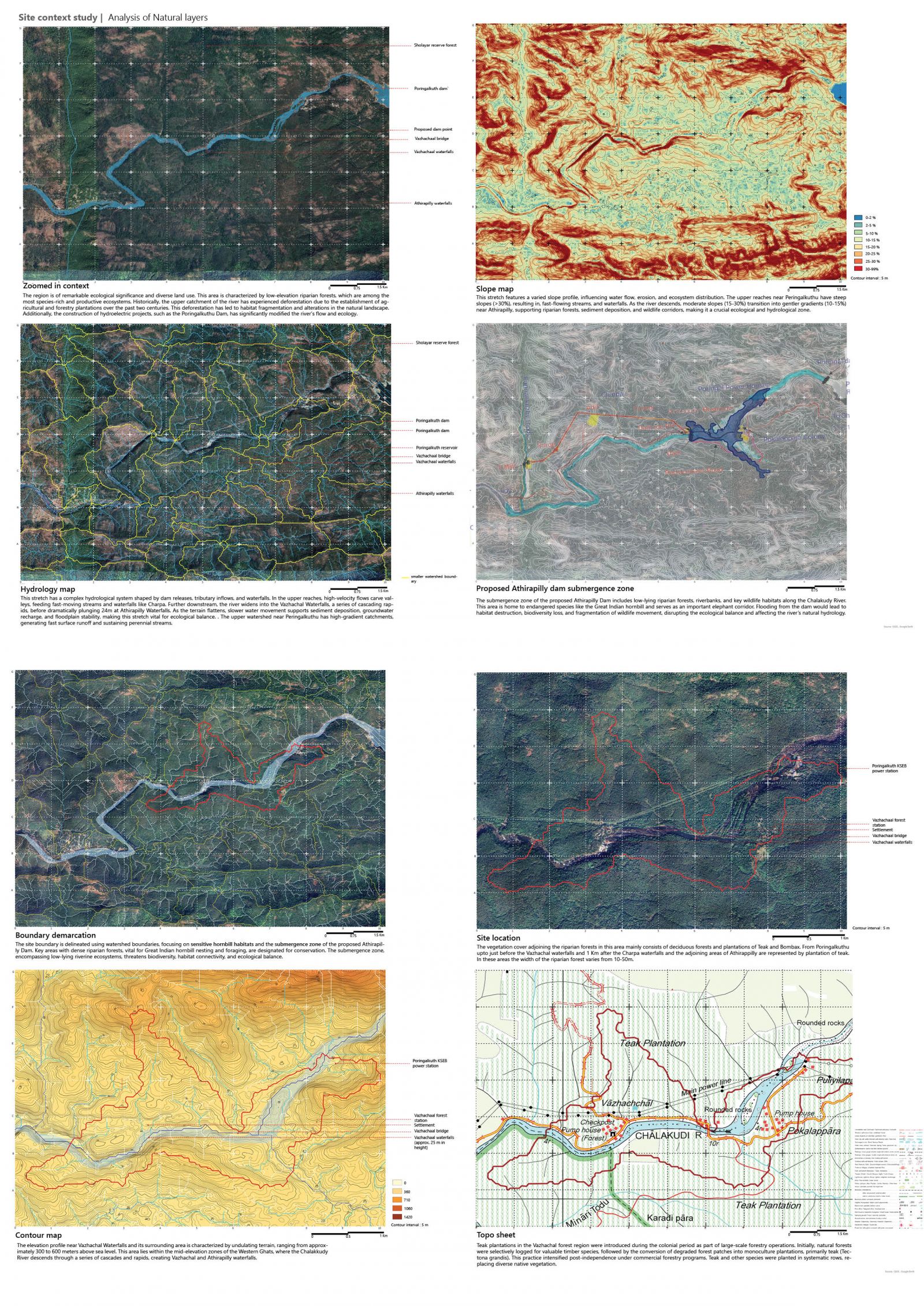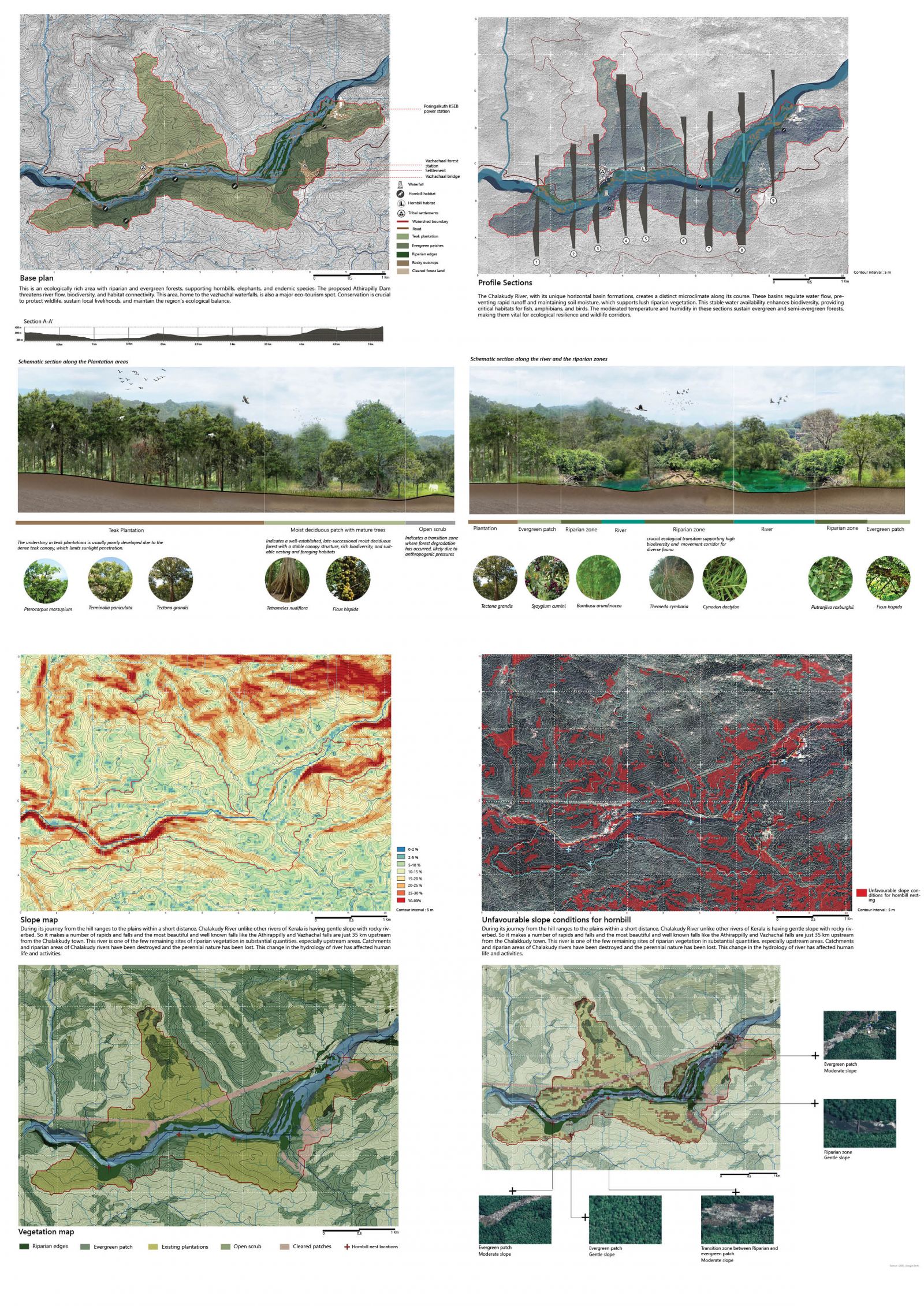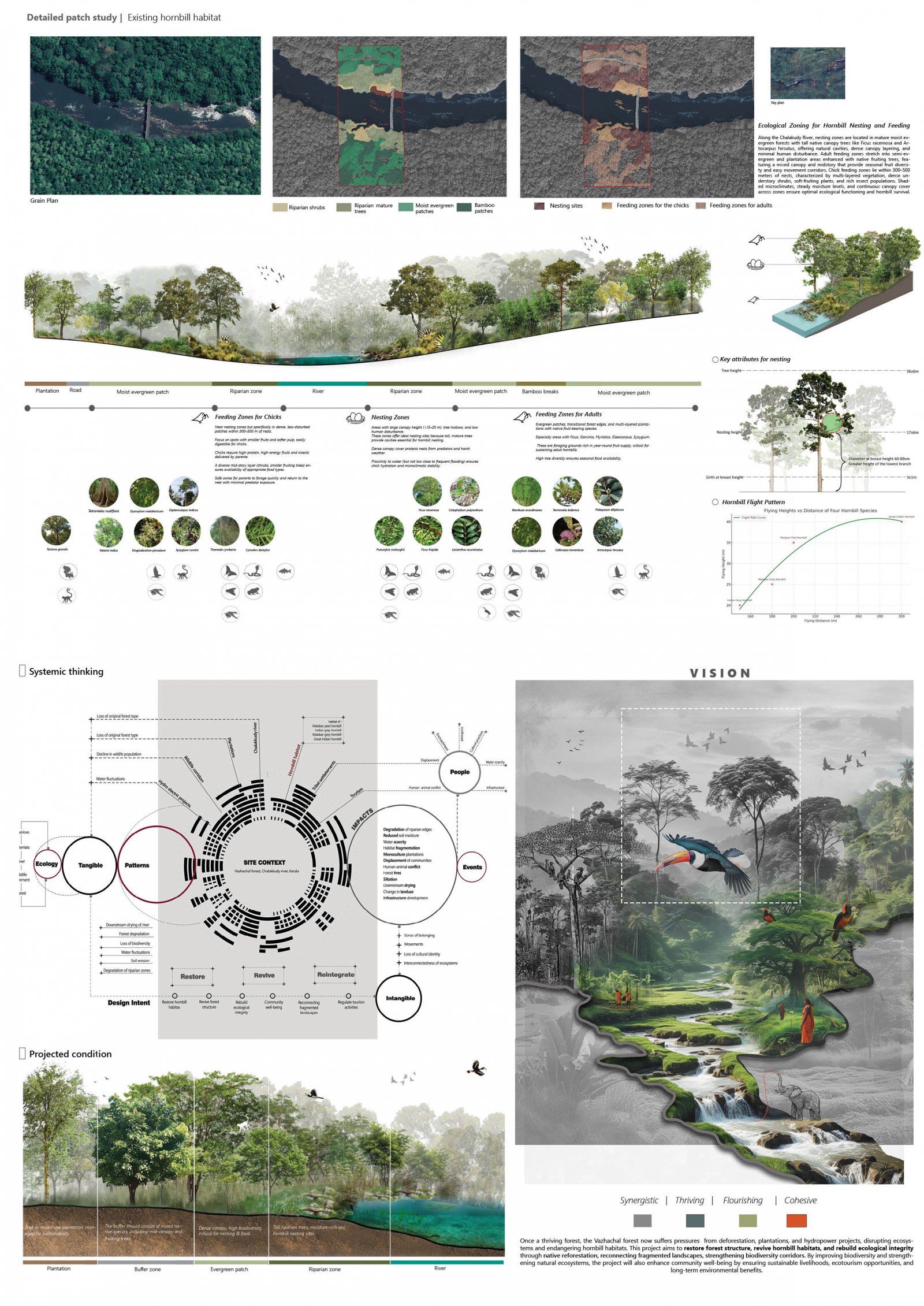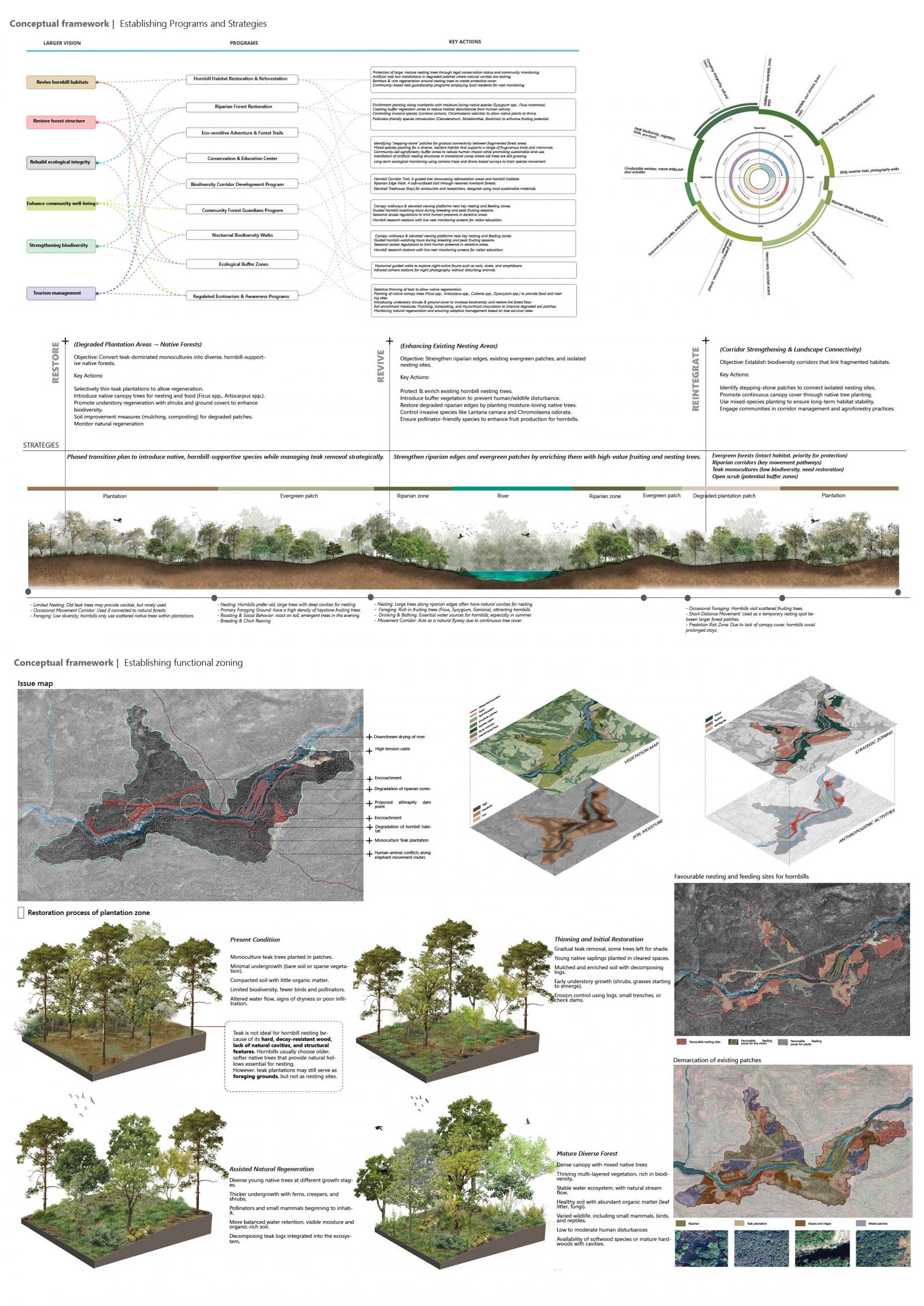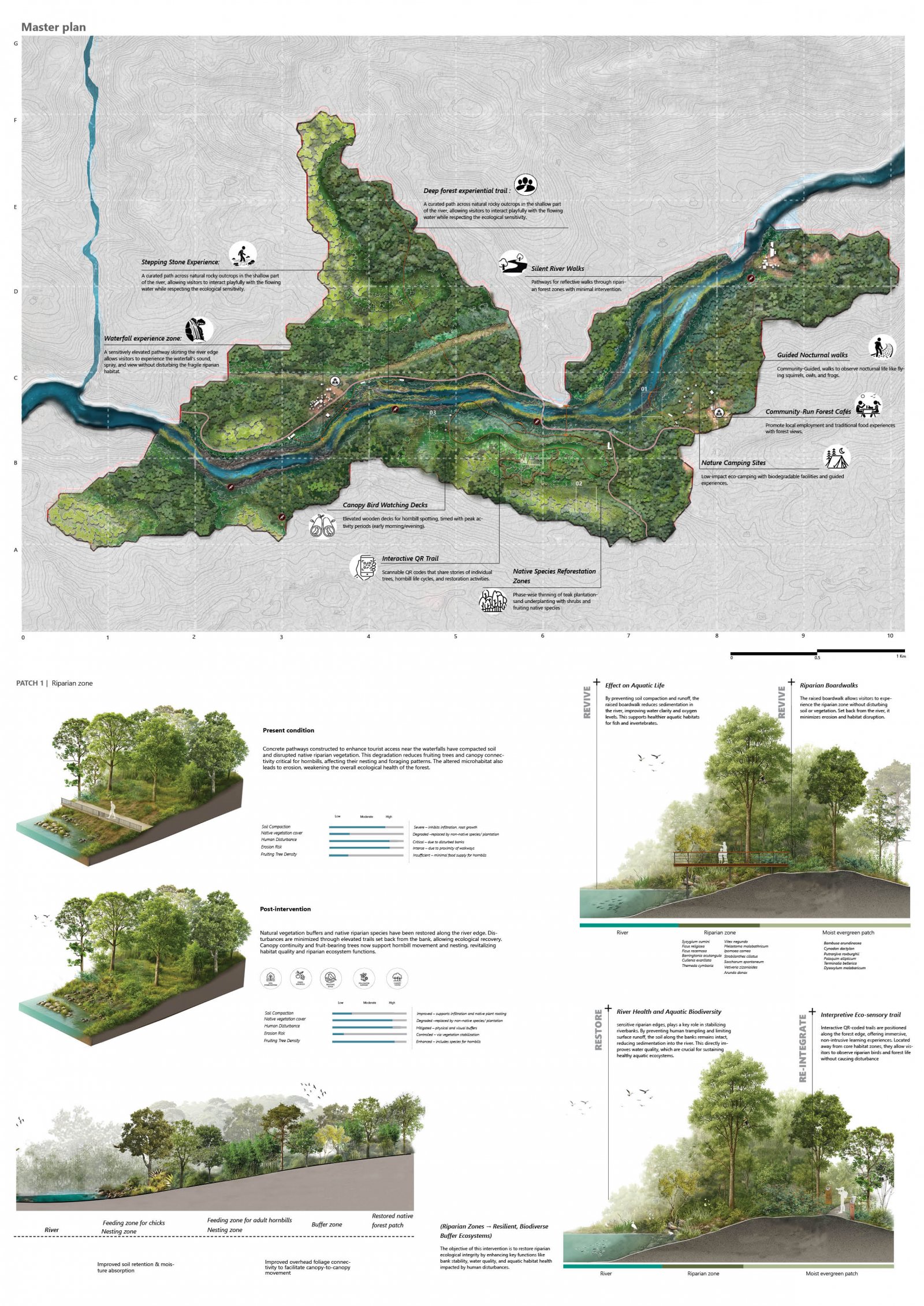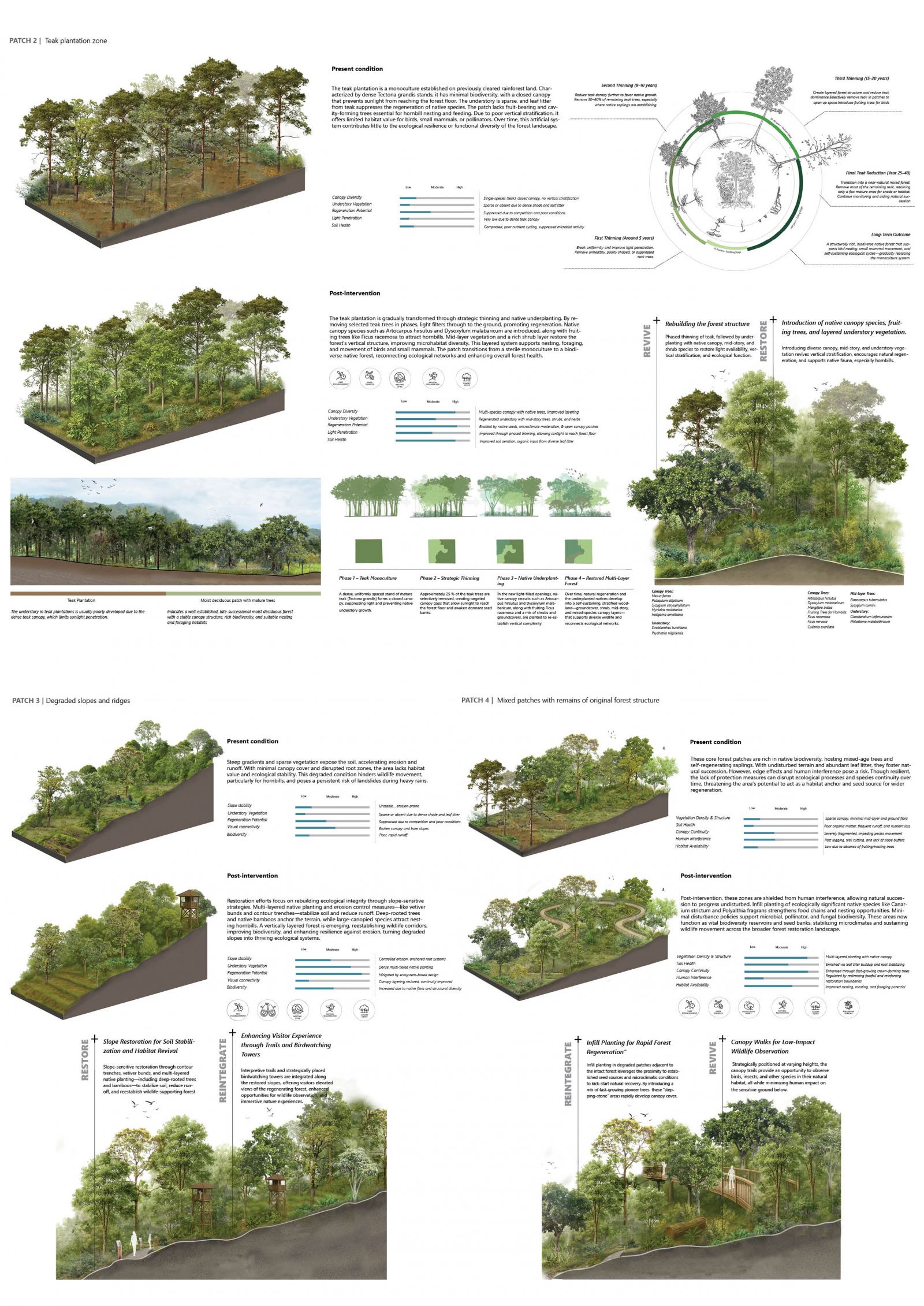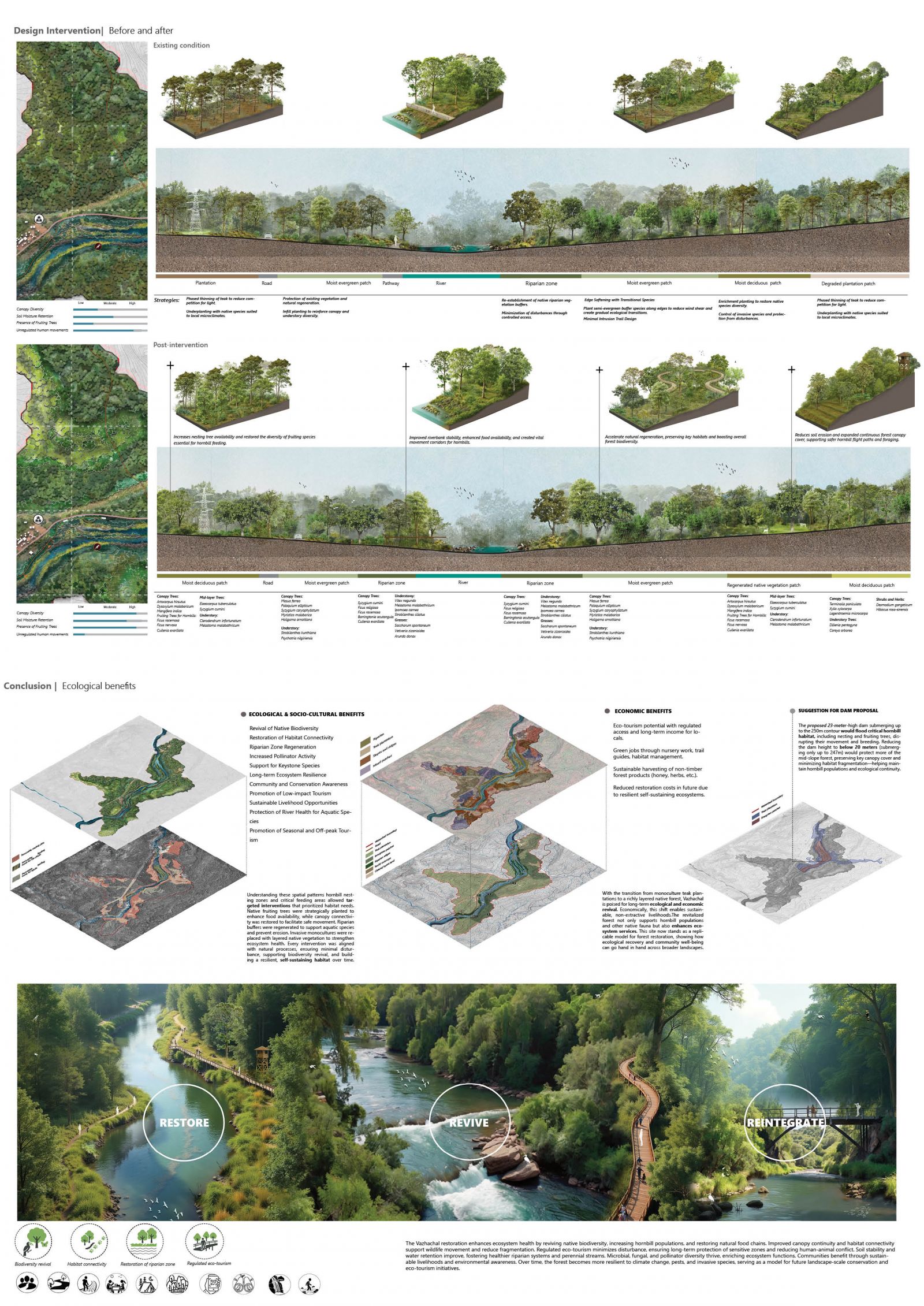Your browser is out-of-date!
For a richer surfing experience on our website, please update your browser. Update my browser now!
For a richer surfing experience on our website, please update your browser. Update my browser now!
Chalakkudy river in the Western Ghats was once dominated by dense tropical evergreen, semi-ev ergreen, and riparian forests, supporting rich bio diversity. Over time, teak plantations, hydropow er projects, and deforestation have fragmented the landscape, reducing habitat continuity. The Athirappilly hydropower project, proposed on the Chalakkudy River, threatens to further disrupt riparian forests, impacting water flow and food availability for wildlife. This region is one of the few in the Western Ghats where all four hornbill species coexist due to its once-intact forests. These changes threaten hornbills, which rely on large, old-grown trees for nesting and diverse fruiting species for food. The Kadar tribe, an indigenous forest-dwelling community, once hunters gradually learned to coexist with them and now play a key role in their conservation. However, deforestation and devel opment threaten both, making habitat protection crucial for preserving the forest’s ecological bal ance and cultural heritage. Both hornbills and the Kadar tribe are integral to this forest ecosystem— the hornbills sustain the forests, and the Kadar people act as its stewards.
View Additional Work